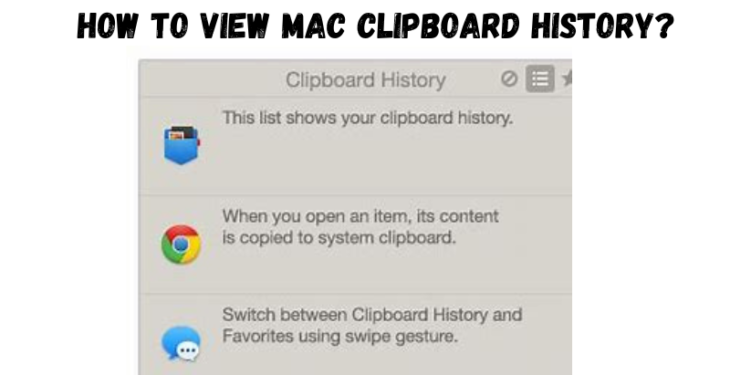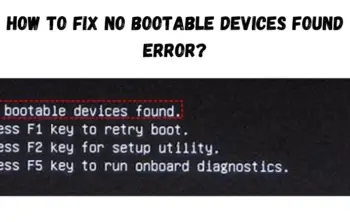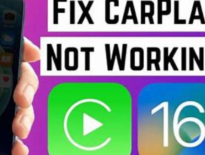In this article you will get to know information on how to view mac clipboard history. The clipboard has been present on computers for decades, and Macs are no exception. But what is the clipboard exactly?
And how can you see everything the clipboard has copied—known as its history—over the years? We’re here to help you answer these questions and more.
Read on to see how the clipboard works on your Mac, how to see your Mac’s clipboard history, and what you can do with it.
Read Article: How to Turn Off Airplay?
What Is the Clipboard:
The clipboard in your computer is what lets you copy, cut, and paste text or images in different applications. It logs the content you want to move around, and either places a copy or allows the original content to be placed elsewhere.
Macs, iPads, and iPhones also use a Universal Clipboard, as of macOS Sierra and iOS 10. The Universal Clipboard allows you to copy text from one device, like your iPhone, and paste it onto your Mac.
You just need to ensure both devices are on the same Wi-Fi, logged into the same iCloud account, and have Bluetooth turned on.
How to Copy and Paste Content with the Clipboard on macOS:
You’re likely familiar with the traditional way a clipboard can cut, copy, and paste on a Mac: you highlight text or an image, hit Edit > Copy or Cut in the application you’re using, and then Edit > Paste wherever you want the text or image to go.
The keyboard shortcuts for this are Cmd + C for copy, Cmd + X for cut, and Cmd + V for paste. But this just applies to the main clipboard on Mac. There is actually a secondary clipboard you can utilize as well via different keyboard shortcuts.
For this secondary Mac clipboard, you use Ctrl + K to cut text, and Ctrl + Y to paste. There isn’t a copy option here, and because you can only cut text, you can only use this secondary clipboard with text that can be cut.
Text in an online article can’t usually be cut and pasted elsewhere—it must be copied. So, the secondary clipboard can really only work with applications and documents you can edit the text or content of.
This is still highly useful in many situations, of course, and it actually helps with the fact that the macOS clipboards have very short memories. We’ll get into what that means and how you can access a macOS clipboard’s limited history in the next section.
How Do I See the Mac Clipboard History?
Mac clipboards don’t keep very long histories of the content they’ve copied. They keep track of the last item that was copied or cut on the Mac, but not anything that was copied or cut before that.
This means they use very little memory to operate, but it also means if you want to go back and relocate or re-paste anything you copied before, your Mac clipboard history won’t remember it at all.
However, there is a way to access your Mac’s clipboard history to see the last item that was copied or cut to it. Technically, hitting Paste would let you see this too, but if you want to read what text you’d be pasting first, there’s a better option.
When in Finder, click on the Edit dropdown menu and then select Show Clipboard. A window will pop up showing you the last item put in your Mac’s clipboard.
It will only do this with the main clipboard and the Universal Clipboard, not the secondary clipboard we talked about in the last section. But the secondary clipboard can be used to help with the fact that the main Mac clipboard has such a short copy history.
You can use the secondary clipboard in tandem with the main clipboard to cut and move text or images around, so the main clipboard holds a copied item you need to paste again.
Perhaps the hidden secondary clipboard doesn’t offer quite enough support to you, though. Or perhaps you didn’t realize you’d need text again, and you’ve already overwritten it in both clipboards. For longer and better Mac Clipboard History, you’ll need a clipboard manager.
DEFAULT CLIPBOARD:
The default macOS clipboard is basic at best. It seems Apple added a clipboard function and let you configure the rest. The clipboard only remembers one entry, and there is no menu bar or dock shortcut to access it with a single click.
The Mac clipboard doesn’t remember the source (from which app the user copied the text). Here’s how you can access and use the default clipboard on Mac.
Step 1: Open Finder on Mac:
Step 2: Select Edit in the menu bar:
Step 3: Click Show clipboard and check your recently copied text:
We tried setting up a keyboard shortcut for the Mac clipboard using the System Preferences menu, but it didn’t work. The macOS’s clipboard isn’t intuitive to use and leaves a lot to desire. Let’s check a couple of third-party clipboard managers on Mac.
COPYCLIP:
CopyClip is readily available to download from the Mac App Store, and the app does support Apple’s M-series CPU. Let’s check CopyClip in action. Shall we?
Step 1: Find the CopyClip app icon (the one that looks like an attachment) and click on it (check steps in the previous section):
Step 2: Select Preferences:
Step 3: You can set how many clippings to remember, the number of clippings to display, and start CopyClip at system startup from the General menu:
Step 4: Move to the Exceptions menu and ask CopyClip to exclude select apps from the list:
For example, you can blacklist CopyClip from password managers and other sensitive apps. Whenever you copy a text or web link, CopyClip will run in the background to save the same.
Simply click the CopyClip icon in the menu bar and check your entire clipboard history on Mac. You can open CopyClip from the menu bar and select clear to remove clipboard history at any point. CopyClip is entirely free to download and use.
PASTE:
Paste is the best clipboard app on Mac. It’s a universal clipboard manager to sync copied content between iPhone, iPad, and Mac. Unlike the default Mac clipboard and CopyClip, you can create custom lists and smartly organize copied content. Here’s how you can set up and use Paste on Mac.
Step 1: Download Paste from the official website or Mac App Store:
Step 2: Like CopyClip, Paste will enable a shortcut in the menu bar:
Step 3: You can use the command + shift + V keys and access the clipboard:
Whenever you copy text, Paste will save it in the app. Paste also shows the source app (from which you copied the text).
The Best Mac Clipboard Managers:
A clipboard manager is a tool that lets you copy, cut, and paste items as many times as you need. No more rewriting every time you copy or cut something new—your clipboard manager will remember everything you’ve cut and copied in a nice long clipboard history.
You can therefore avoid going between applications to copy and paste content. You can just copy and cut everything you need at once, then paste each item in the order you want them.
Clipboard managers can keep lists of content you paste often, like passwords or list formats. Overall, they’re really great for improving your workflow and keeping hold of important information while you work.
We have several clipboard managers we love to use on Mac, and we seriously encourage you to check them out. They could be game-changers, and several of them are free!
The Mac Clipboard History Is Easy to Access, but Low in Memory
As you’ve seen, it’s not hard to use the main, secondary, and Universal clipboards on your Mac. Nor is it difficult to assess what little history they keep.
But they get rewritten every time you use them, so accessing the actual Mac clipboard history isn’t usually very helpful. This is why we recommend using clipboard managers on Mac, which allow you to maximize your clipboard history and improve your workflow.
But perhaps just knowing how to use the secondary clipboard can help your workflow some, and knowing your clipboards are limited will help you enough already.






